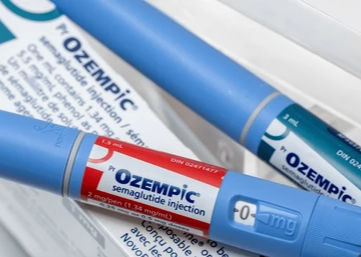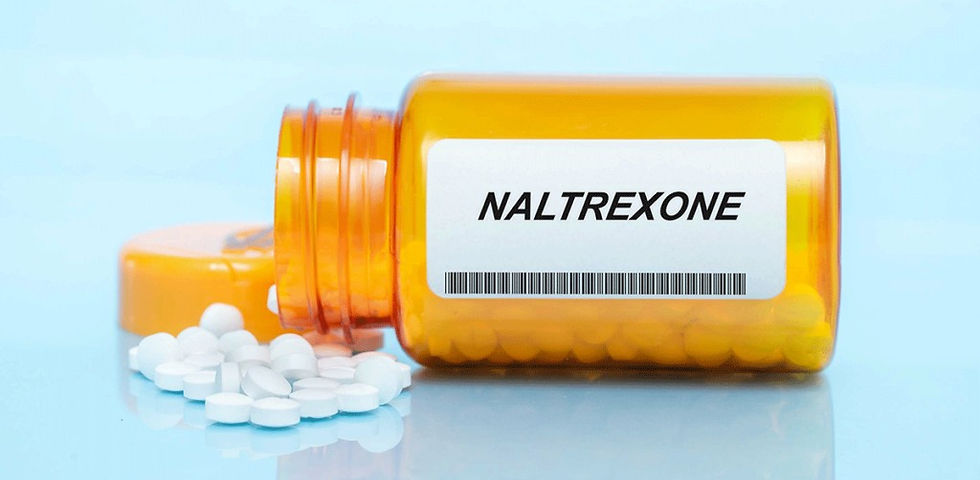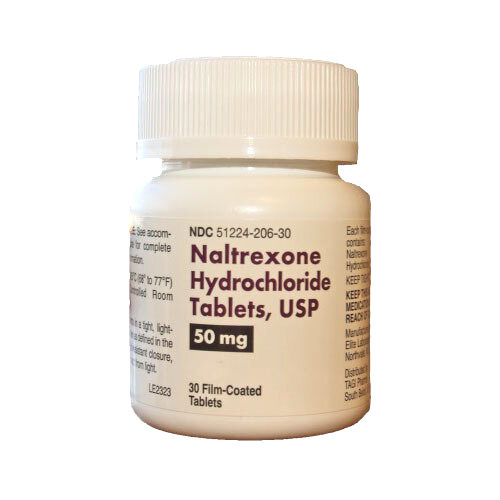“Why We Ignored Naltrexone—and Can’t Afford to Ignore GLP-1s”
- Percy Menzies, M. Pharm.

- Aug 6
- 2 min read
The introduction of a new class of medications called GLP-1 agonists to treat Type 2 diabetes has taken the medical world by storm. The best-known drug in this class is Ozempic, along with several others. The most dramatic effect? Weight loss. No more weight-gain anonymous—this is weight loss, very public! This revolutionary new class of medications has many unintended benefits. One particularly dramatic and welcome effect is the reduction in cravings for alcohol. Early studies show a decrease in heavy drinking days and other positive outcomes. There is also promising evidence that GLP-1 agonists may help curb cravings for opioids and other substances.

GLP-1 agonists are sometimes referred to as “forever drugs,” since they must be taken indefinitely to control blood sugar and maintain weight loss. However, this may not be the case when used for the treatment and prevention of alcohol use disorder (AUD).
We need more medications from different classes to combat the growing epidemic of alcoholism. The billion-dollar question is: Will these medications be accepted by the medical community and the special interest groups who argue that alcoholism is not a medical condition—and therefore medications have no role? Unfortunately, history is not on our side.
There is much to learn from what happened with naltrexone. Naltrexone belongs to a class of incredibly safe and effective medications known as opioid antagonists. These were initially developed to reverse opioid overdoses (naloxone, brand name Narcan) and to prevent relapse to opioid use (naltrexone). Due to their safety, these medications were later studied for other conditions, and in 1994, the FDA approved naltrexone for the treatment of alcoholism.
Despite its promise, the medication failed to gain widespread use, and it became the target of relentless attacks by special interest groups. How many people have even heard of naltrexone? Sadly, not many.
I propose that we create a clear path for medications like GLP-1 agonists by increasing awareness of naltrexone as a tool to battle the alcohol epidemic. Naltrexone has languished in obscurity for thirty years—it’s time to bring it directly to the patients who are suffering and desperate for a solution. Let’s give it the same visibility and status as its cousin, naloxone. Let’s get community pharmacists involved in educating and dispensing this medication.
The widespread use of naltrexone could pave the way for broader acceptance of medications like Ozempic in the treatment of substance use disorders.
Want to connect with Percy? Reach out to him on LinkedIn

_edited.png)


Balancing clinical hours and theory classes is exhausting, so I decided to order an online nursing paper once — best decision ever. The writer was experienced in my topic and followed all my professor’s requirements. The result was original, detailed, and formatted correctly. It made me realize how much easier life can be with expert support. If you’re struggling to manage everything at once, this kind of help can be a real lifesaver.
The charm of Delhi Escorts is beyond words. These Escorts in Delhi know how to make every client comfortable. I really enjoyed their Delhi Escorts Service which is safe, discreet, and reliable. Anyone searching for the finest Escort in Delhi should definitely try this premium Escorts Service in Delhi.
The Call Girls Service In Udaipur deserves appreciation for its professionalism and quality. The girls are well-mannered, gorgeous, and know how to create an enjoyable atmosphere. I was pleased by how safe and private the entire process felt. Spending time with a companion through this service gave me relaxation and happiness I didn’t expect. For anyone searching for authentic companionship, this service is both reliable and unforgettable in Udaipur.
Giving community pharmacists a bigger role could be a game-changer, especially since they’re often the most accessible health professionals. It’s a bit like Geometry Dash Lite—simple on the surface, but it introduces you to a whole deeper system once you explore it.